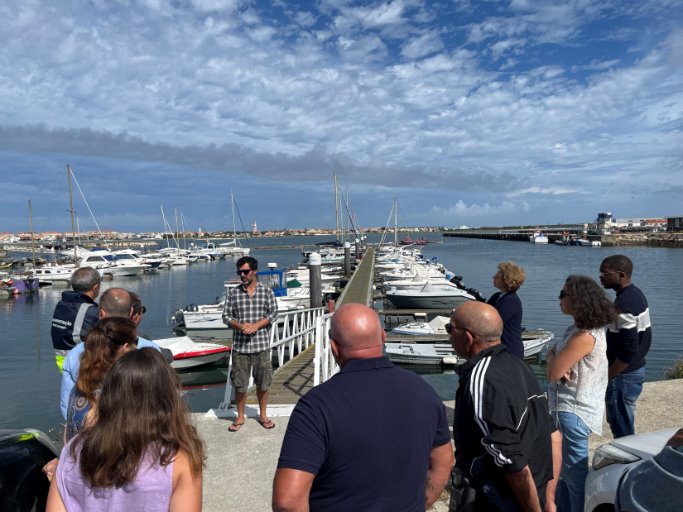A-AGORA installs Biohuts in Porto de Aveiro to improve the biodiversity of the Ria
Subaquatic Structures provided by STRIX, ‘Biohuts’, increase aquatic biodiversity and improve environmental conservation

The Portuguese Demonstrator of the A-AAGORA project took an important step towards environmental conservation by installing ‘Biohuts’, innovative underwater structures, on the pontoons of Porto de Aveiro. This initiative aims to improve biodiversity and aquatic biomass in the Ria de Aveiro.
The ‘Biohuts’ function as fish nurseries, recreating natural habitats that attract juvenile marine species, promoting a richer and more diverse ecosystem.

The installation of these structures took place on the 12th and 13th of August, involving Strix, responsible for developing the Biohuts, the Port of Aveiro and the University of Aveiro, among the DEMO-PT partners. APARA – Artisanal Fishing Association of the Araranguá Region also participated in the initiative, as an important stakeholder in the action. On August 13th, a public presentation was held at APARA headquarters, where the objectives and benefits of ‘Biohuts’ were presented to regional stakeholders.

Over the next two years, the effectiveness of the ‘Biohuts’ will be regularly monitored, with monthly checks and data collection to assess their positive impact on local biodiversity.
A-AAGORA promotes Restoration Actions in Ria de Aveiro for the recovery of Zostera Noltei
Ria de Aveiro was the setting for a series of restoration actions focused on the recovery of Zostera noltei, a marine grass essential for the health of coastal ecosystems. The activities took place over six days, between July and August 2024, involving 41 participants, including academics, volunteers, and professionals from various fields.
The Importance of Zostera Noltei
Zostera noltei, a grass-like flowering plant also known as dwarf eelgrass, plays a vital role in Ria de Aveiro, covering an area of more than 230 hectares. This plant not only provides habitat and protection for various marine species but also contributes to sediment retention and the improvement of water quality. Due to its ability to survive in hydrodynamic conditions and turbid waters, dwarf eelgrass is an effective natural solution for ecosystem recovery.

Restoration Methodology and Locations
The restoration actions followed a specific protocol that involved the collection and transplantation of sods—intact sediment units with dwarf eelgrass roots, rhizomes, and leaves. This method, in addition to being economically efficient, allows donor areas to regenerate in less than 12 months, ensuring the long-term sustainability of the ecosystem.


The activities were carried out in three distinct areas of Ria de Aveiro: Laranjo, Antuã, and Aveiro, which were previously identified as suitable for the survival of dwarf eelgrass.

Participation
The success of these actions is due to the joint efforts of 41 participants, including 19 volunteers, who worked in challenging conditions, using boats and even an improvised sled to transport the sods.
Results and Impact
These actions exemplify a continuous commitment to ecosystem restoration, aligning with the United Nations Decade on Ecosystem Restoration (2021-2030) and the new EU Nature Restoration Law. In addition to contributing to the mitigation of climate change and biodiversity loss, the actions in Ria de Aveiro help reinforce food security and environmental quality in the region.




